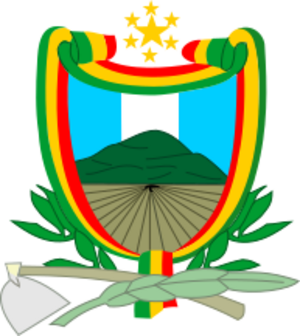Jalapa Department facts for kids
Jalapa is a special area in Guatemala called a department. Think of it like a state or a large county. The main city in this department is also called Jalapa. It's a beautiful place with interesting history and culture.
Contents
Cities and Towns
The Jalapa Department is made up of several important cities and towns, which are called municipalities. Each one has its own unique charm and community. Here are the main ones:
- Jalapa
- Mataquescuintla
- Monjas
- San Carlos Alzatate
- San Luis Jilotepeque
- San Manuel Chaparrón
- San Pedro Pinula
Where is Jalapa?
Jalapa is located in the eastern part of Guatemala. It's a landlocked department, meaning it doesn't have a coastline. The area is known for its hills and valleys, making it a scenic place. The climate is generally mild, which is great for farming.
A Glimpse into History
The area where Jalapa is located has a long history, dating back to ancient times. Before the Spanish arrived, indigenous people lived here. Later, during the colonial period, the region became an important part of Guatemala. The department of Jalapa was officially created in 1873.
People and Culture
The people of Jalapa are known for their warm hospitality. Many different cultures live here, including indigenous groups like the Poqomam and Xinka people, as well as mestizos (people of mixed European and indigenous heritage). This mix creates a rich cultural tapestry. You can often see traditional clothing, hear local music, and enjoy delicious food that reflects these different backgrounds.
What Does Jalapa Produce?
The economy of Jalapa mainly relies on farming. Farmers in the department grow many different crops. Some of the most important products include coffee, corn, beans, and various fruits and vegetables. Raising cattle is also a big part of the economy. These activities help support the families and communities throughout the department.
Places to Explore
Jalapa has several natural attractions and interesting spots. The department is home to beautiful landscapes, including mountains and rivers. There are also local markets where you can find handmade crafts and fresh produce. Exploring these places gives you a real feel for the local life and traditions.
Want to Learn More?
 You can find more information about the Jalapa Department in Spanish here: Departamento de Jalapa para niños
You can find more information about the Jalapa Department in Spanish here: Departamento de Jalapa para niños




